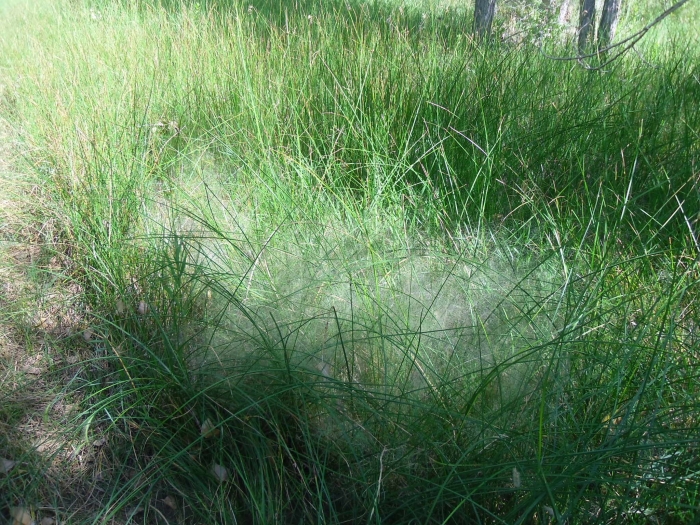Scratchgrass
(Muhlenbergia asperifolia)
Scratchgrass (Muhlenbergia asperifolia)
/
/

Eric Watts
CC BY 4.0
Image By:
Eric Watts
Recorded By:
Copyright:
CC BY 4.0
Copyright Notice:
Photo by: Eric Watts | License Type: CC BY 4.0 | License URL: http://creativecommons.org/licenses/by/4.0/ | Rights Holder: Eric Watts | Publisher: iNaturalist | Date Created: 2014-03-02T20:10:37-08:00 |




















Estimated Native Range
Summary
Muhlenbergia asperifolia, commonly known as Scratchgrass, is a deciduous or semi-deciduous perennial grass native to a variety of habitats including open woodlands, grasslands, and riparian zones throughout North and South America. It typically grows to about 60 cm (2 ft) tall and is characterized by its inflorescence, which is a very open, wispy array of many hair-thin, outstretched branches each up to 14 cm (5.5 in) long. The plant’s appearance is most notable during its flowering season when these delicate inflorescences create a soft, textured effect.
Scratchgrass is valued for its use in habitat restoration and revegetation projects, particularly in disturbed habitats in the southwestern United States, including riparian zones in California and the Intermountain West. It is also appreciated for its ability to produce a dense groundcover once established, which can help prevent soil erosion. In cultivation, Scratchgrass requires full sun exposure and thrives with high amounts of water, preferring soils with medium to fast drainage. While it is not commonly used in ornamental gardening, its ecological benefits make it a significant species for conservation efforts. Potential problems include its aggressive spreading, which can be a concern in areas where it is not native, as it may outcompete local flora.CC BY-SA 4.0
Scratchgrass is valued for its use in habitat restoration and revegetation projects, particularly in disturbed habitats in the southwestern United States, including riparian zones in California and the Intermountain West. It is also appreciated for its ability to produce a dense groundcover once established, which can help prevent soil erosion. In cultivation, Scratchgrass requires full sun exposure and thrives with high amounts of water, preferring soils with medium to fast drainage. While it is not commonly used in ornamental gardening, its ecological benefits make it a significant species for conservation efforts. Potential problems include its aggressive spreading, which can be a concern in areas where it is not native, as it may outcompete local flora.CC BY-SA 4.0
Plant Description
- Plant Type: Grass
- Height: 0.4-2 feet
- Width: 1-1.5 feet
- Growth Rate: Moderate
- Flower Color: N/A
- Flowering Season: Summer
- Leaf Retention: Deciduous, Semi-Deciduous
Growth Requirements
- Sun: Full Sun
- Water: High
- Drainage: Medium, Fast
Common Uses
Bird Garden, Deer Resistant, Drought Tolerant, Fire Resistant, Low Maintenance, Street Planting
Natural Habitat
Native to open woodlands, grasslands, and riparian zones throughout North and South America
Other Names
Common Names: Scratch Grass, Alkali Muhly, Rough-Leaved Dropseed, Rough-Leaved Muhly, Muhlenbergie À Feuilles Rudes
Scientific Names: , Muhlenbergia asperifolia, Sporobolus asperifolius, Vilfa asperifolia, Sporobolus deserticola, Agrostis distichophylla, Sporobolus asperifolius var. major, Sporobolus copiapinus, Sporobolus sarmentosus, Agrostis eremophila
GBIF Accepted Name: Muhlenbergia asperifolia (Nees & Meyen ex Trin.) Parodi